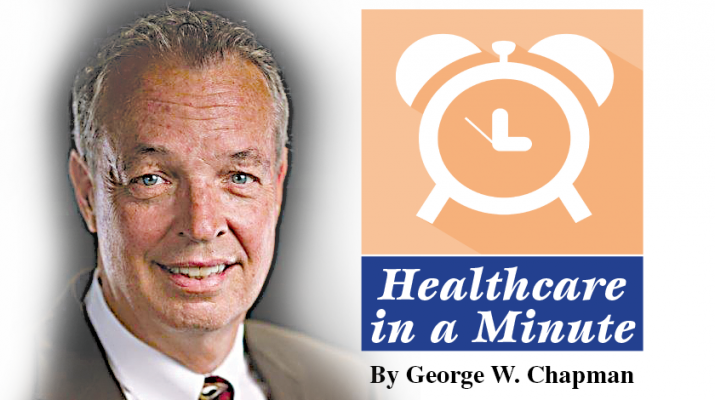By George W. Chapman
Passed in March, the $1.9 trillion package afforded more relief to people living at poverty levels who are insured through the ACA — currently, those under 400% of federal poverty guidelines qualify for prorated premium subsidies. The lower your income, the greater the subsidy. These subsidies are paid by the federal government directly to the insurer selected by the member. (Federal poverty levels, for examples, are $12,880 for an individual and $26,500 for a household of four.) For 2021, members with incomes more than 400% of poverty guidelines will to have to pay more than 8.5% of their income for insurance. The number of people seeking health insurance on the exchanges has surged due to the pandemic and related loss of employer-sponsored insurance.
“Lethal weapon”
That is how NYS prosecutors described the prescription pad of Nassau County general practitioner George Blatti, 75. He is facing a 59-count indictment including five counts of second-degree murder and 11 counts of first-degree reckless endangerment. The physician showed “depraved indifference to human life” as he illegally prescribed “massive amounts” of opioids to patients despite increasing warnings and pleas from patients, family and friends. Blatti, “often working out of his car like a common drug dealer,” prescribed opioids to people who were not officially his patients, (no medical record or having done an exam.) He was back in court last month for sentencing. He could receive 25 years to life.
Telehealth’s future
House health subcommittee chairwoman Anna Eshoo wants to make Medicare’s temporary expansion of telehealth services due to the pandemic permanent, across the entire country. Right now, only certain areas of the country will remain eligible (typically rural) once the pandemic ends. (Commercial payers have tended to mimic Medicare when it comes to telehealth.) Eshoo not only wants to retain existing telehealth services, she proposes to expand the list of eligible health services. Critics and skeptics are concerned that the ease or convenience of telehealth could result in costly unnecessary services, fraud, abuse and worse outcomes. According to the HHS inspector general who has been monitoring claims throughout the pandemic, that has not occurred. As payers transition away from fee-for-service and towards capitation or bundled payments, (see below) the issue of unnecessary services or overutilization becomes moot.
Bundled payment study
A bundled payment to a certain provider covers all services delivered by all associated providers for 30 days related to a specific surgical procedure. For example, an orthopedic group receives say $50,000 from Medicare to replace a member’s hip. The bundled payment covers basically everything from soup to nuts: including the surgeon, the surgery center, nursing, the anesthesiologist, lab and X-rays, supplies, equipment, the artificial hip and post- operative therapy. It would be up to the orthopedic group to pay the associated providers. The Rand Corp. studied 2,400 bundled procedures including hip and knee replacement, bariatric weight surgery and spinal infusions. Medicare saved an average $4,200, or 10%, per case versus what Medicare would have paid everyone individually fee for service. Even better, patients saved an average $500 out of pocket. For some reason, commercial carriers are not totally on board yet with bundled payments.
World vaccination
While we are focused on vaccinating 330 million Americans, there are 8 billion people worldwide that must be vaccinated as well if we are to effectively end the pandemic. Vaccine manufacturers have teamed up with other companies to distribute vaccines world-wide over the next two years. Pfizer and BioNTech have partnered with 10 other companies to produce two billion doses this year. Product development starts in St. Louis, goes to Andover, Mass., for additional work and then on to Kalamazoo, Mich., for final touches. In Europe, after it starts in St. Louis, the vaccine goes to Belgium then to Germany before final distribution. Britain-based Astra Zeneca is scheduled to produce three billion dosed via the Netherlands and Belgium. They will supply Mexico and South America. Novavax will produce two billion and will supply Japan and the South Pacific. Moderna will produce two billion vaccines focused on Asia and Africa.
Friendlier MRI
If you suffer from claustrophobia, or just plain anxiety, getting an MRI is not a pleasant experience. Declining to receive one deprives both you and your physician of a valuable diagnostic tool. Seeing a potential market, imaging giant Philips has collaborated with Disney to produce the “Philips Ambient Experience.” Patients are able to personalize the lighting in the room and select video entertainment while inside the MRI tube. There are already about 2,000 of these. Kids can select animated shorts featuring characters like Mickey Mouse, Aladdin and the Avengers.
CVS invests in communities.
The pharmaceutical chain is addressing racial inequality and the social determinants of health, like poverty and food insecurity, that negatively impact the health of the communities it serves. CVS is investing more than $12 million to build 60 affordable apartment units in south Phoenix, where 80% of the residents are Black or Latino. A housing study revealed 50% of the residents there spend more than 30% of their income on housing which ultimately leaves little income for other living expenses, let alone healthcare. Last year, CVS spent $114 million on 2,800 units in 30 cities in 20 states. CVS also provides, at no cost, mobile preventive health screening via RVs to underserved neighbors.
George W. Chapman is a healthcare business consultant who works exclusively with physicians, hospitals and healthcare organizations. He operates GW Chapman Consulting based in Syracuse. Email him at gwc@gwchapmanconsulting.com.

